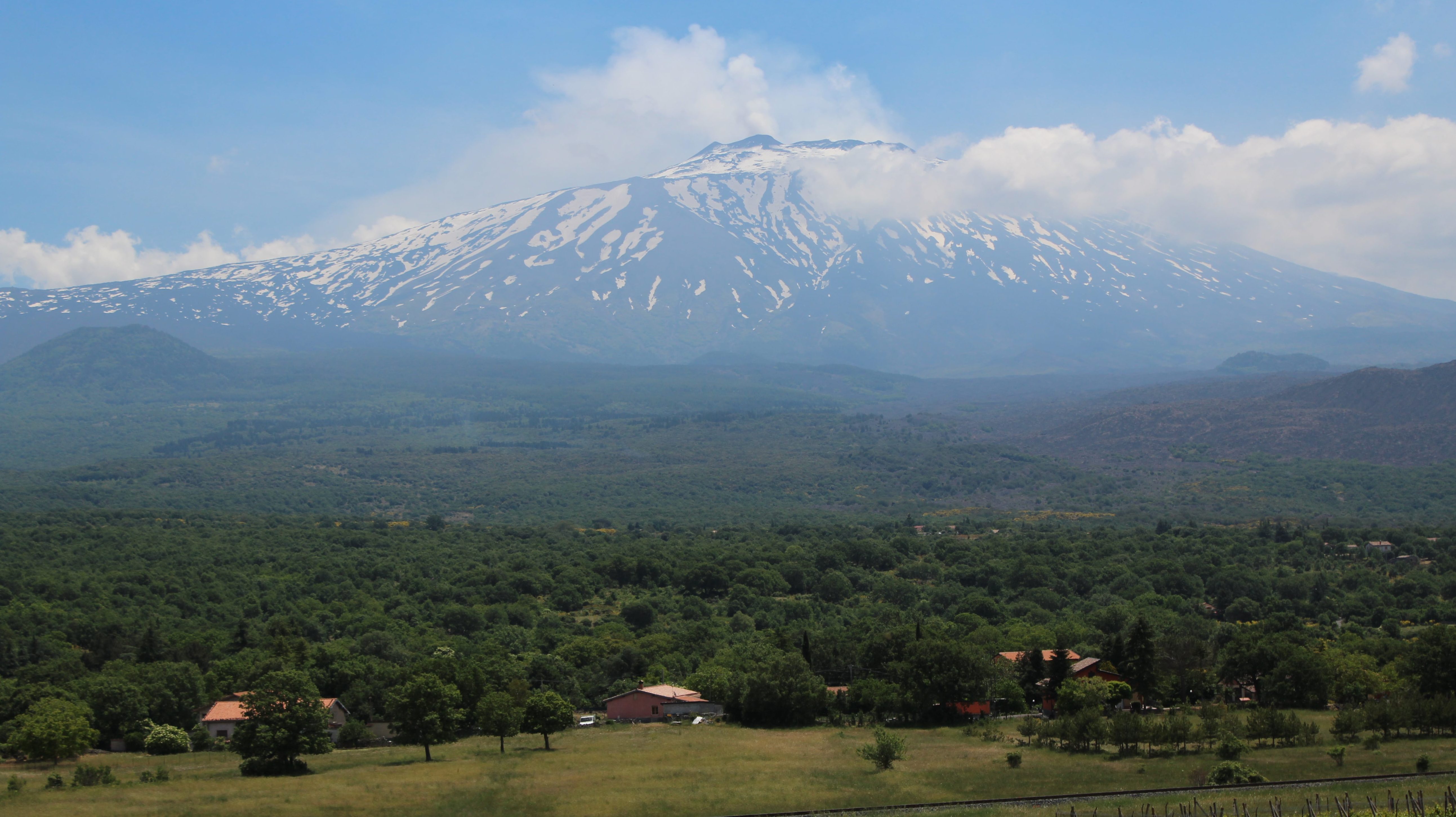Personal stories about living under the shadow of an active volcano
by Medea Santonocito
Since I was a child, I have had a strong fascination with volcanoes. I don’t know precisely why; it must be because of a particular feeling of power. It is a natural phenomenon that makes you feel really small. When a volcano erupts, spewing hot ashes into the air, your flight may be diverted or the entire airport may shut down completely, and there is nothing you can do about it. If you happen to live nearby, you would probably pray to the god of winds that the ashes won’t rain down on your town but rather somewhere else. Sweeping away the ashes is very hard and stressful, not to mention the impact they have on roads and sewage networks as well as on people’s health. However, why am I portraying such a catastrophic situation? Above all, who would ever live in such a dangerous place? Many people do and the events I have just described are indeed based on true stories.
Given my interest in this natural phenomenon, I consider myself very lucky to have spent a lot of time in Sicily, where there are a couple of active volcanoes. Nonetheless, Mt. Etna is the highest and probably the most famous among them. Today I would like to tell you about the relationship that there is between this volcano and its inhabitants.

A brief contextualization
In 2013, Mt. Etna was proclaimed World Heritage Site by UNESCO. One of the reasons behind this choice was the contribution it has brought to earth sciences. It is a laboratory where new technologies are being developed to try and forecast eruptions so that the population can be warned as soon as possible. These studies would benefit every community living in similar areas around the world. Yet, this is not just about scientists.
From a cultural point of view, the volcano’s activity has been documented since ancient times. These events have inspired a plethora of myths and superstitions, poems and evocative names. Until modern science came up with an explanation. For the Greeks, Mt. Etna was home to the Cyclops, the one-eyed giants who appeared in Homer’s Odyssey. The forges of Hephaestus were there too. Similarly, Roman mythology claimed it was the home of Vulcan, the god of fire and metalworking. The Arabs later called it Jabal al-Nar (“the mountain of fire”). Nowadays, another name for it is Mongibello, which combines the Latin mons with the Arabic jabal, both meaning “mountain”.
The locals simply call it a Muntagna (“the mountain”) and – mind you – it is female. During my last visit to Sicily, I asked some people a simple question: “What is your relationship with Mt. Etna?”
I have here reported the different answers I received.
The opinions rooted in folklore…
[Notice the use of “she” and “her”, which I decided to translate literally]
“Mt. Etna is both majestic and dreaded. It is a beautiful mountain: during the winter months, the top is covered in snow; as for the eruptions, they are spectacular. You look at her and it feels familiar, as something that belongs to you. At the same time, when she gets angry and the ground shakes it is scary but, even then, I cannot hate her. I would say Mt. Etna mirrors the character of the Sicilian people.”

“It is ever-changing. You look at her shape and you see how it has changed over time. This mountain conveys a feeling of joy to me. I have so many childhood memories there.”
Mt. Etna has been erupting frequently for hundreds of years, modifying the surrounding landscape. At the beginning of the 20th century, there were only two craters on the summit; now there are five, with the last one building up in 2011.

“She is like a mother, meaning that our roots are here. The history of the people and of the cities around here is intertwined with the volcano.”
Over the past centuries, the city of Catania has been destroyed and rebuilt a few times. In 1669, during the worst eruption ever documented, lava flows reached the medieval walls of the city and partially burnt them down. Because of those events, Catania’s urban structure is completely different nowadays.

…and the pragmatic, down-to-earth views.
“We are used to hearing rumbles and explosions. If she destroys something, we will rebuild it: houses, vineyards, mountain shelters. By living here, you get this kind of troubles, but you also get some great advantages: it is a love-hate relationship.”
“We have a potentially endless supply of building material. Volcanic rock is used to build houses, dry-stone walls, cobblestones. Not to mention the extremely fertile soil, rich in minerals and nutrients that give a special flavour to the local wines or fruits, to name a few. Another example? The pistachios grown here have a different flavour from the rest.”
“Mt. Etna is good for the economy. Tourists come here to see the eruptions, they go hiking on guided tours. Many of them come purposely even from far away.”
One could say Mt. Etna is almost a brand nowadays. Its name and silhouette are visible on souvenirs, on packages, on signs outside restaurants and shops.

However, I believe that the relationship between the people and their volcano has deeper roots; it is the result of both the realistic and the folkloric elements altogether. Such a strong bond is the reason why these people would never choose a different place to live in, despite the risks. Mt. Etna is a distinctive part of the local identity.
“What makes it so special then?” – I asked.
“It is a volcano, it is alive.”
On a final note, I would like to thank each person who contributed to this article by answering my questions and by providing me with beautiful pictures.
XXXXXXXXXXXXXXXXX